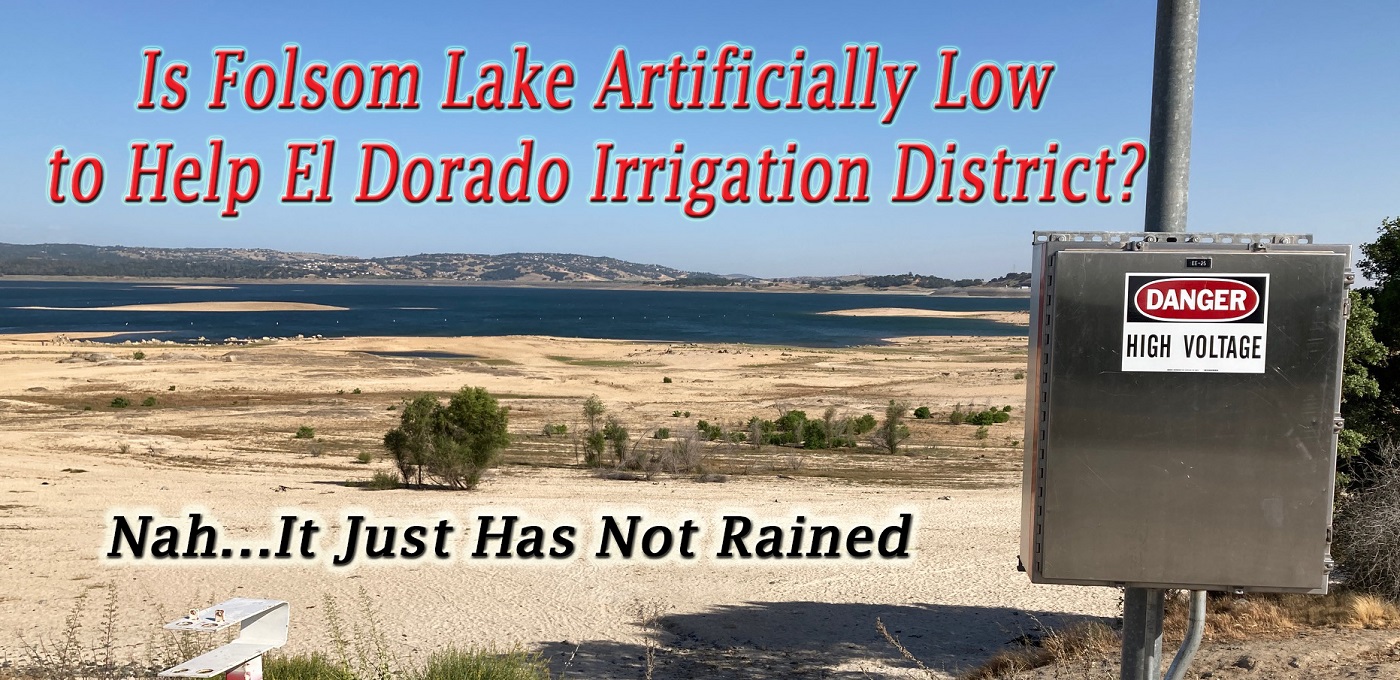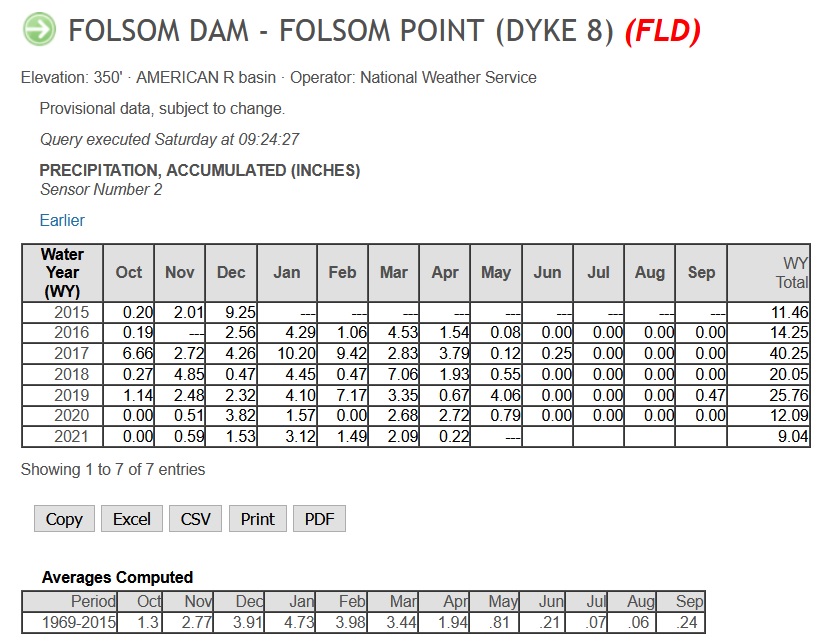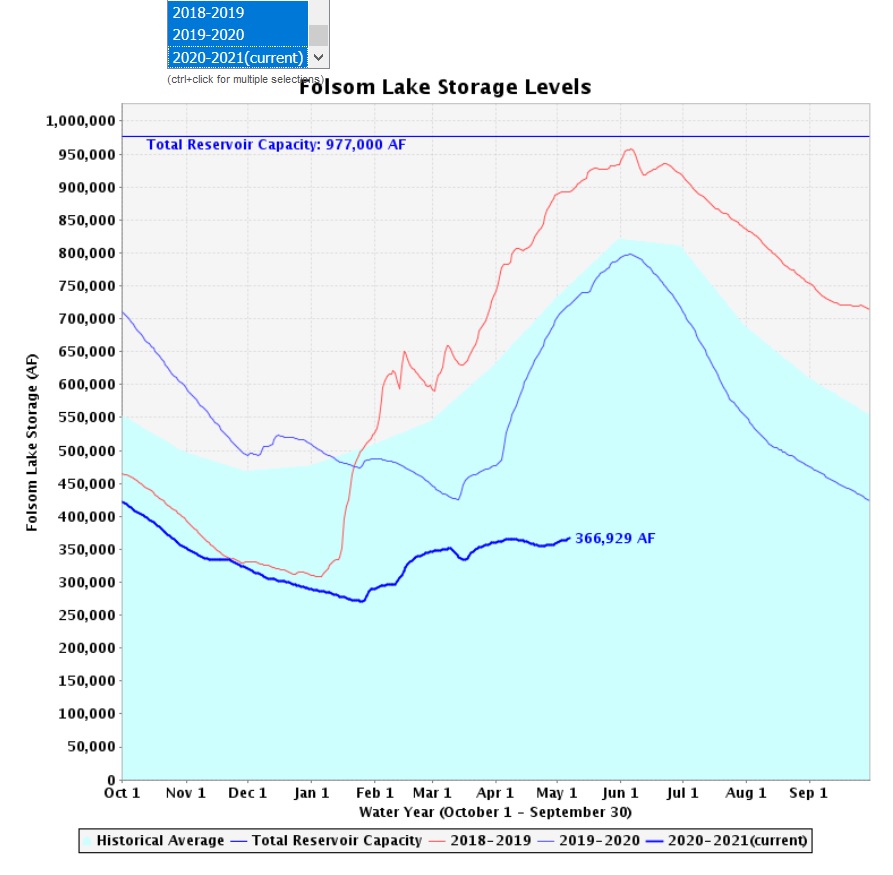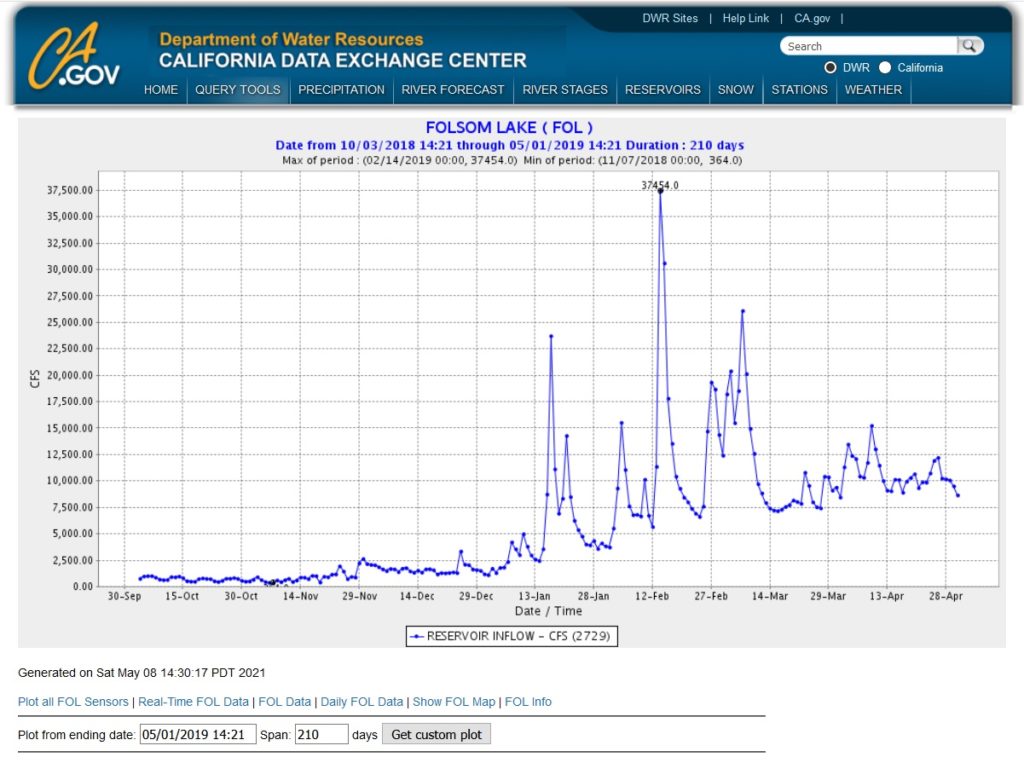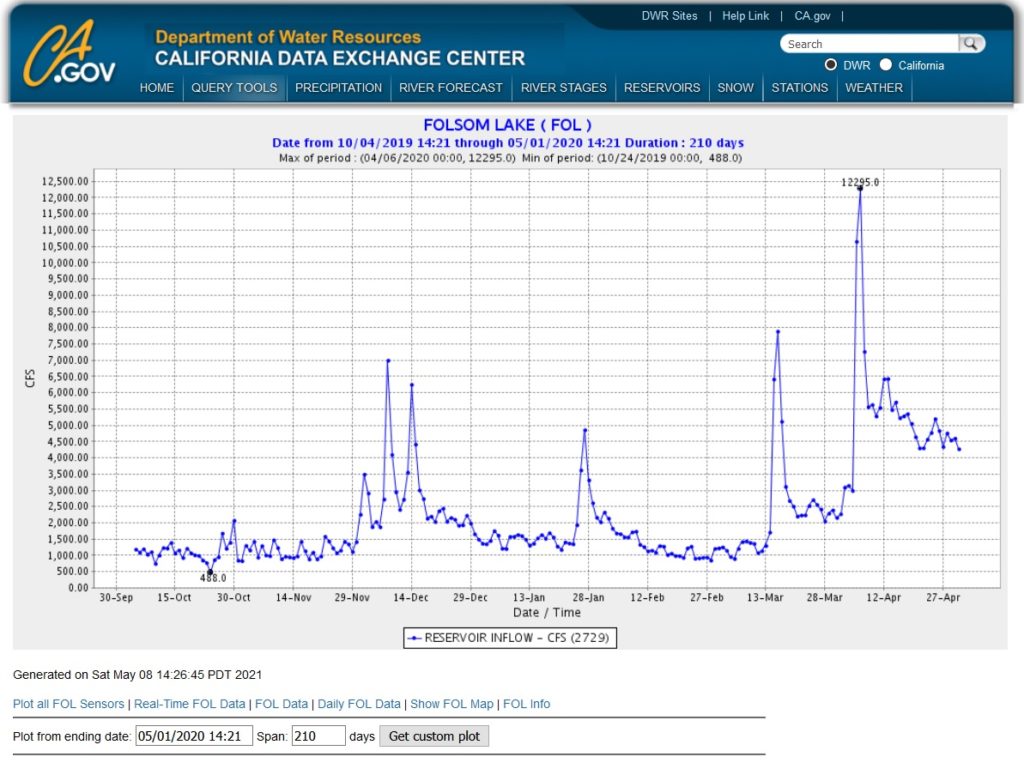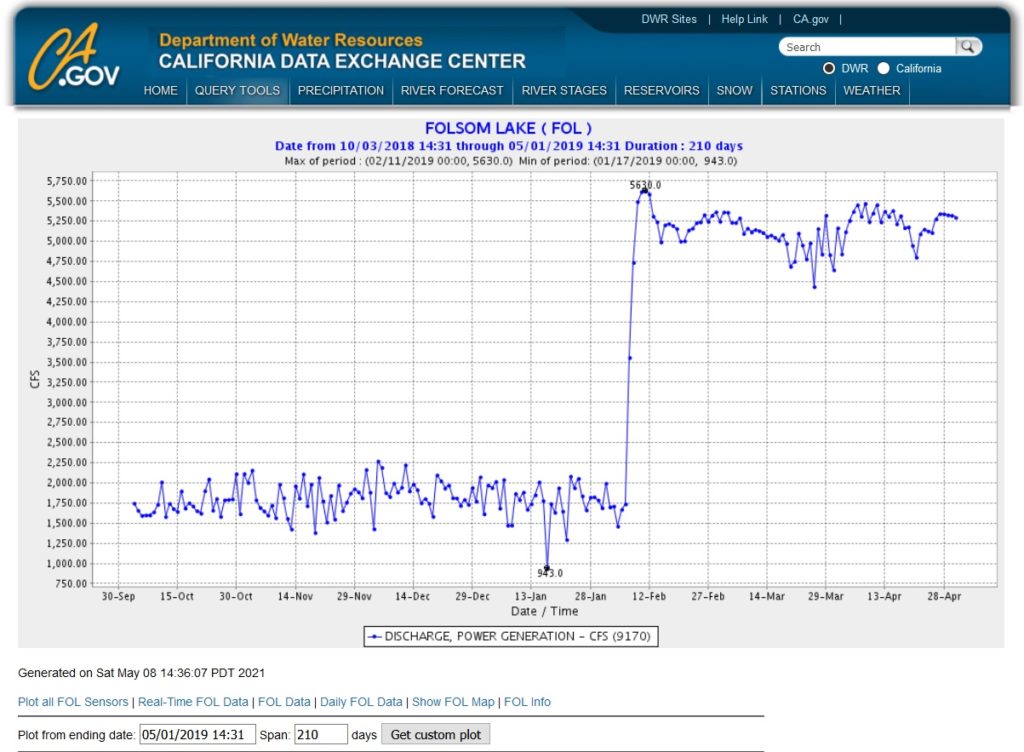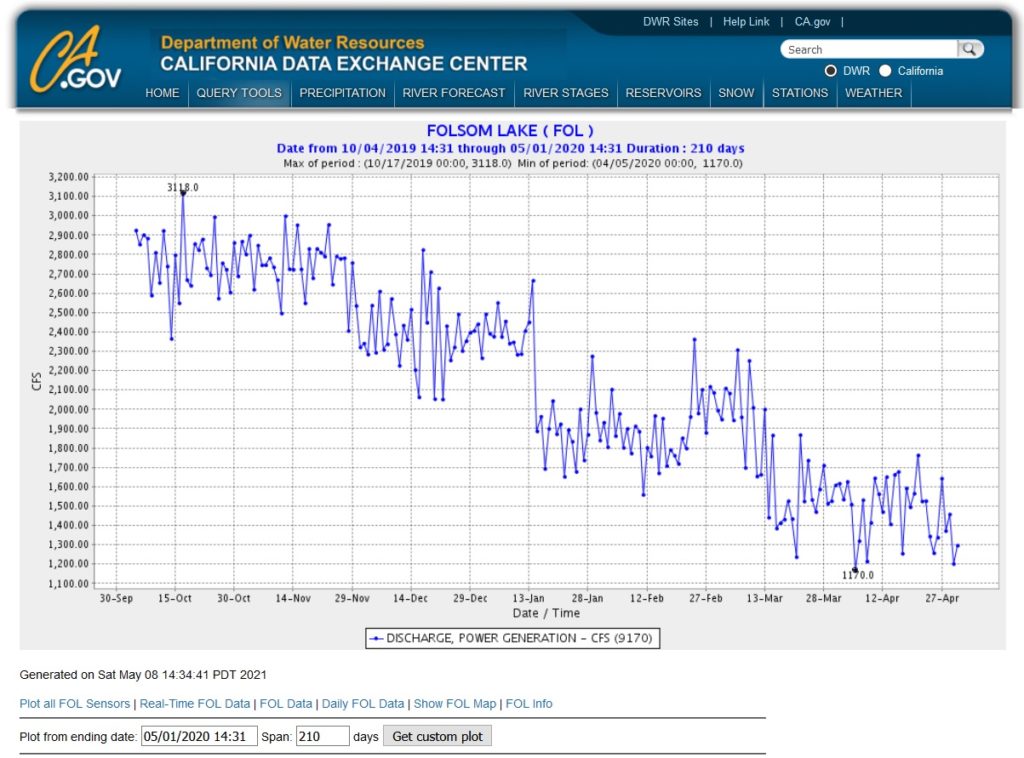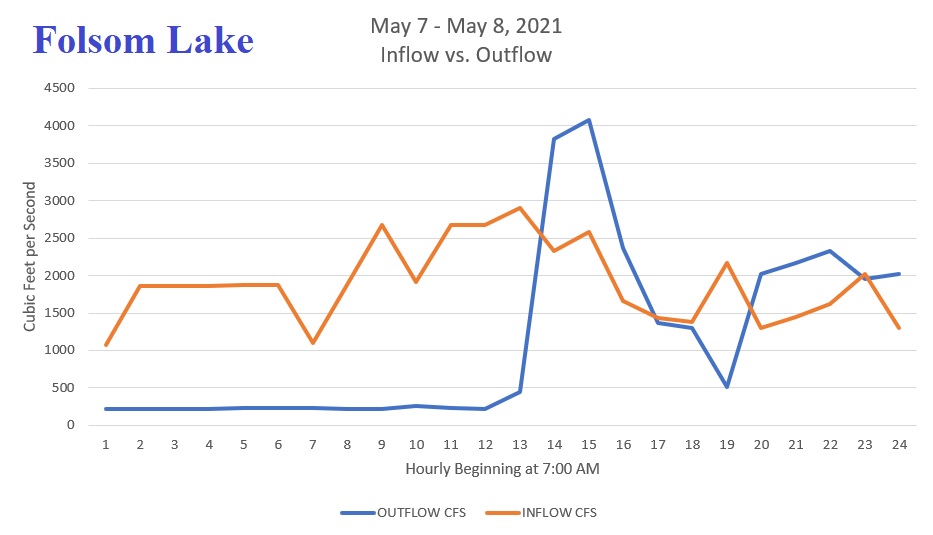There are social media rumors and conspiracy theories floating around that the Bureau of Reclamation is keeping Folsom Lake artificially low to help the El Dorado Irrigation District. Specifically, that the Bureau of Reclamation is releasing too much water in order to keep the lake level low as El Dorado Irrigation replaces their water pumps. The reality is that Folsom Lake just has not had the inflow of water from the North and South Forks of the American River as it has in prior years.
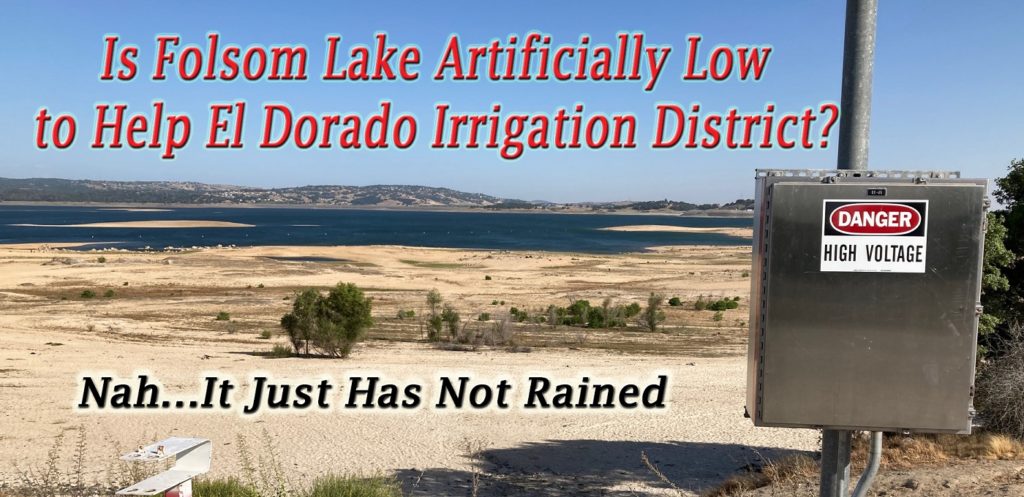
The intake water pump project for the El Dorado Irrigation District is a long overdue undertaking. The pumps, that draw water out of Folsom Lake between Browns Ravine and New York Creek, needed to be replaced. It is a coincidence that in 2021 Folsom Lake has hovered below 50 percent of capacity, with a lower lake elevation, that obviously helps El Dorado Irrigation proceed with their work. But the work would have been done whether the lake was very low or completely full.
Conspiracy Theory For Artificially Low Folsom Lake
The conspiracy theories that the Bureau of Reclamation is keeping the lake low is based on an incomplete analysis of water discharges for power generation. At first glance, the discharge numbers – water being released from Folsom Lake – is greater than the inflow. The erroneous conclusion is that discharge is to keep the lake low. The reality is that there are numerous reasons why the Bureau of Reclamation is releasing water for power generation greater than the inflows.
Folsom Dam hydro-electric generation is part of the California electrical grid. It may be called upon to generate electricity because another power plant has gone off-line for maintenance or there is a spike in forecasted power consumption. Folsom Dam operators don’t have the luxury of declining to discharge water for power consumption just to keep the lake full for recreation.
2021 Has Been A Dry Year
Water flowing into Folsom Lake is directly related to precipitation and snow melt. Traditionally, the lake peaks in capacity at the end of May or the beginning of June. The latter part of Spring is when the lake starts getting the bulk of the snow melt. Water Year 2020-2021 (October – September) has been horrible. This precipitation accumulation chart shows how little rain Folsom has had. It mirrors the lack of precipitation in the watershed that feeds Folsom Lake. The Folsom Point weather station has only received 9 inches of rain compared to 11.3 inches in 2020 and 21.23 inches through the end of April.
The lower precipitation is reflected in the smaller reservoir storage when you compare Water Years 2018-19, 2019-20, and 2020-21 as of early May 2021.
Bureau of Reclamation Is Releasing Too Much Water!!!!!!!
The conspiracy theorist will counter that the storage is only low because the Bureau of Reclamation is discharging so much water in order to keep the lake low. There is no average curve for inflows or outflows at Folsom Lake. The inflow is governed by the rain storms and snow melt. The outflow is a function of power demand the hydro-electric plant is called to meet.
I used the California Data Exchange Center website of the Department of Water Resources to plot inflow and outflow for the past three water years. The water measurements are in cubic feet per second, CFS. What is critical to keep in mind is the scale of the y axis that represents the CFS. For Water Year 2018-19, the CFS tops out at 37,510 because in 2019 we had a major storm in February that created a water flow of 37,454 cfs in to Folsom Lake. There were several storms that produced flows of more than 15,000 cfs. While the super high flows only last for one or two days, in can quickly raise the water level of Folsom Lake.
In water year 2019-20, none of the major storms produced a inflow greater than 12,295 cfs.
For water year 2020-21, we have not had a precipitation event that produce an inflow greater than 5,200 cfs.

In terms of outflow or discharge of water from Folsom Lake, in 2018-19, that spillway gates were opened to release excess water to make room for flood storage. After the big storm in February 2019, the power discharges for power shot up from approximately 2,000 cfs up to 5,600 cfs. That high outflow (4,500 – 5,500 cfs) continued through the end of April as Folsom Lake was running above historical average for capacity.
The healthy outflow of 2019 continued, gradually decreasing until the beginning of January 2020. The outflows in 2020 would gradually decrease from about 2,000 cfs in January down to approximately 1,400 cfs by the end of April. There were no super-sized fall or winter storms in 2019-2020 that would pump up Folsom Lake as in the previous year.
Water year 2020-21 through the end of April has seen two spikes of outflow at the beginning of December and then again in mid-March. What the conspiracy theorists point to is the big spike in outflow in mid-March, then climbing again through April as being excessive releases to keep Folsom Lake low. However, prior to this event, the outflows have been under 1,500 cfs since November, excluding the early December event.

The outflows in 2021, March – April, are higher than in 2020, but they are fall below the 2019 levels. A quick estimate is that the 2021 outflows are about 500 cfs higher than 2020, and 3,000 cfs less than 2019.
Volume = Flow Over Time
The daily point for the outflow maximum does not capture the whole story. The maximum outflow is not continuous for 24 hours. The inflow maximum peak is not continuous. Both fluctuate throughout the day. For the inflow, there are other reservoirs upstream that are discharging water in to Folsom Lake. On the outflow side for power generation, the peak outflow may only be for a couple of hours.
Therefore, it is spurious to extrapolate a peak outflow data point that is higher than a peak inflow number and declare that more water has been released than has flowed in to the reservoir. When taken cumulatively, more water may have poured in to Folsom Lake over 24 hours than was released with a higher rate outflow for a couple of hours. There are other diversions from Folsom Lake to make pointing to power generation outflows as the sole source of a decreasing lake level nonsensical. El Dorado Irrigation, City of Folsom, San Juan Water District, City of Roseville, and the Granite Bay Golf Course can all be supplied with Folsom Lake water. Evaporation from the lake surface can easily be .25 inches per day in May. Outflows for power production are only part of the equation as to why Folsom Lake level is not rising as fast as recreational enthusiasts would like.
Operations at Folsom Dam are governed by a myriad of rules pertaining to minimum necessary flows in the lower American River, Sacramento River, Delta, releases from other reservoirs, and demands for electricity. If the Bureau of Reclamation wanted to keep Folsom Lake levels low, they did not have to work very hard. The lake is low because the precipitation in the watershed that feeds the reservoir is below average. The 2021 outflows that are higher than the similar period in 2020 may be connected to the higher temperatures this Spring and the higher demand for electricity.
If the conspiracy theorists really believe there is some agreement between the Bureau of Reclamation and El Dorado Irrigation District to keep the lake level low, I suggest they file a Freedom of Information Act request for all correspondence between the two entities to uncover the nefarious plot.
